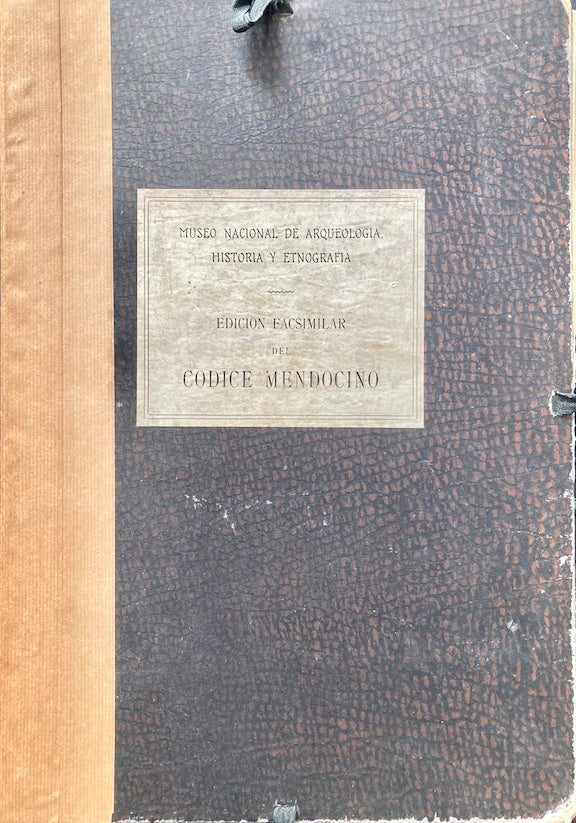Mendoza Collection or Mendocino Codex. Mexico: National Museum of Archeology, History and Ethnography, 1925.
Mendoza Collection or Mendocino Codex. Mexico: National Museum of Archeology, History and Ethnography, 1925.




Mendoza Collection or Mendocino Codex. Mexico: National Museum of Archeology, History and Ethnography, 1925.
Mendoza Collection or Mendocino Codex. Mexico:
National Museum of Archeology, History and Ethnography, 1925.
Paso y Troncoso, Francisco del. Colección de Mendoza o Códice Mendocino. México: Museo Nacional de Arqueología, Historia y Etnografía, 1925.
Good Condition. Only 6 copies of this date listed in Libraries.
This book is a collection of documents known as the Mendoza Codex, compiled by Francisco del Paso y Troncoso. It was published in Mexico in 1925 by the National Museum of Archaeology, History, and Ethnography. The Mendoza Codex is an important indigenous manuscript from the early colonial period in Mexico. The edition likely includes a transcription, translation, and analysis of the codex, providing valuable insights into native cultures and societies in the region.
- Title: Colección de Mendoza o Códice Mendocino (Mendoza Collection or Mendocino Codex)
Description:
The Colección de Mendoza o Códice Mendocino (Mendoza Collection or Mendocino Codex) is a 16th-century Mexican codex that is currently housed in the Bodleian Library at the University of Oxford, England. It is one of the most important pictorial manuscripts from Mesoamerica, and it provides a wealth of information about the Aztec Empire and its culture.
(Facsimile)
The Original codex was composed of 73 folios, which are painted on both sides. The paintings are accompanied by Nahuatl text, which was written in a phonetic script using Spanish letters. The codex is divided into three sections:
- Section 1: This section describes the history of the Aztec people, from their migration from Aztlán to the founding of Tenochtitlan.
- Section 2: This section describes the organization of the Aztec Empire, including its political, social, and economic systems.
- Section 3: This section is a tribute register, which lists the taxes and other obligations that were owed to the Aztec emperor by the various provinces of the empire.
The Colección de Mendoza is a valuable resource for scholars who study the Aztec Empire. It provides a unique glimpse into the Aztec worldview and way of life. The codex has been extensively studied by scholars, and it has been translated into several languages.
Additional Information:
- The Colección de Mendoza was created in the early 16th century, shortly after the Spanish conquest of the Aztec Empire. It is believed to have been commissioned by Antonio de Mendoza, the first viceroy of New Spain.
- The codex was originally known as the Codex Mendocino, because it was thought to have been sent to Spain by Mendoza. However, it is now known that the codex was never sent to Spain, and it remained in Mexico until the 19th century.
- The Colección de Mendoza was acquired by the Bodleian Library in 1697. It was not until the 19th century that the codex was rediscovered and studied by scholars.
